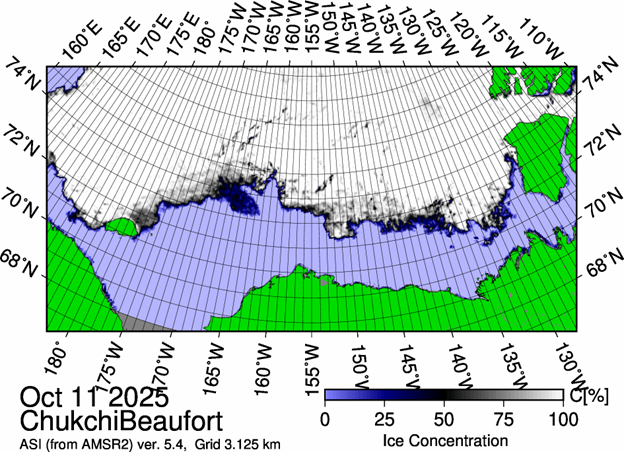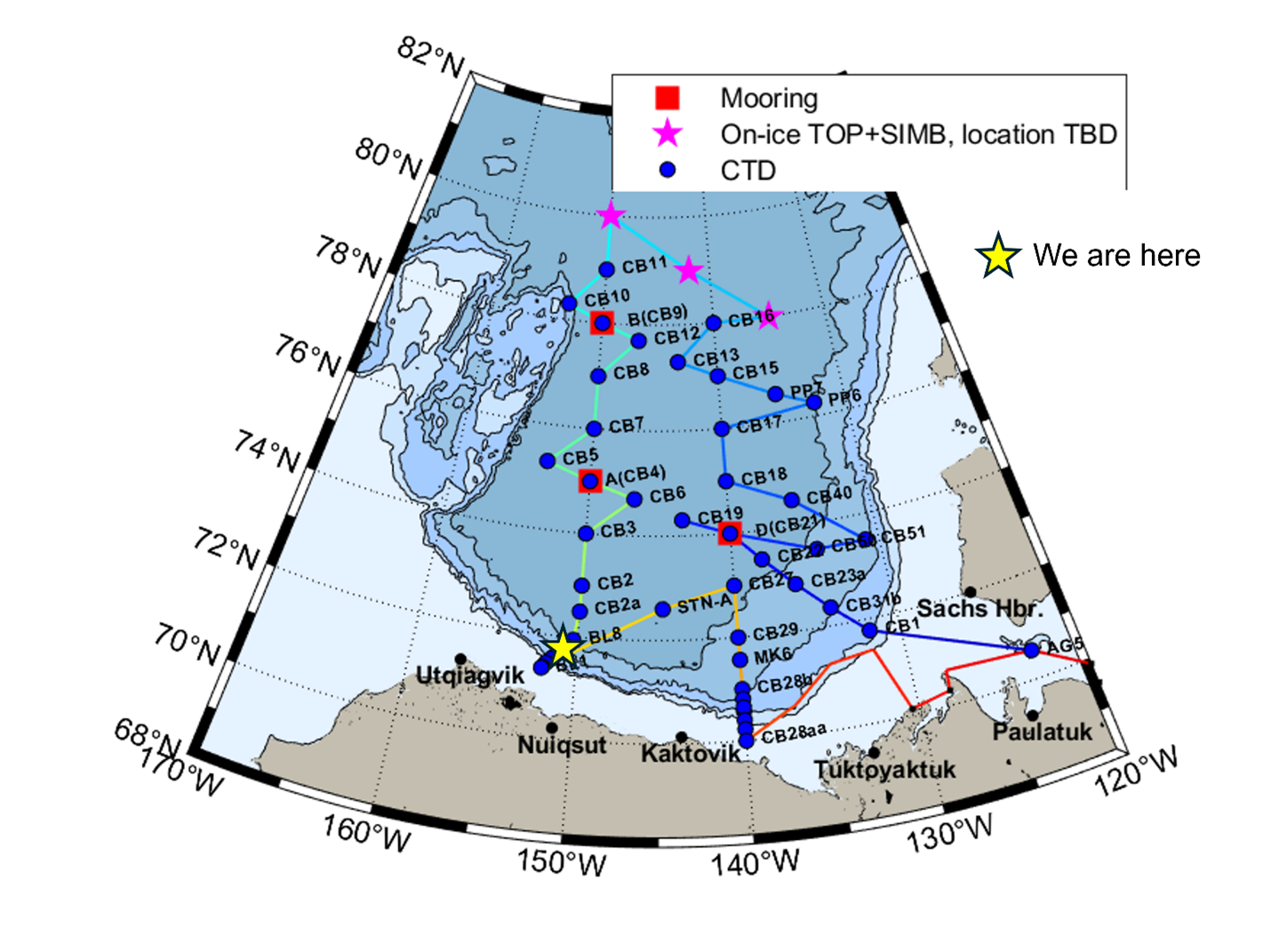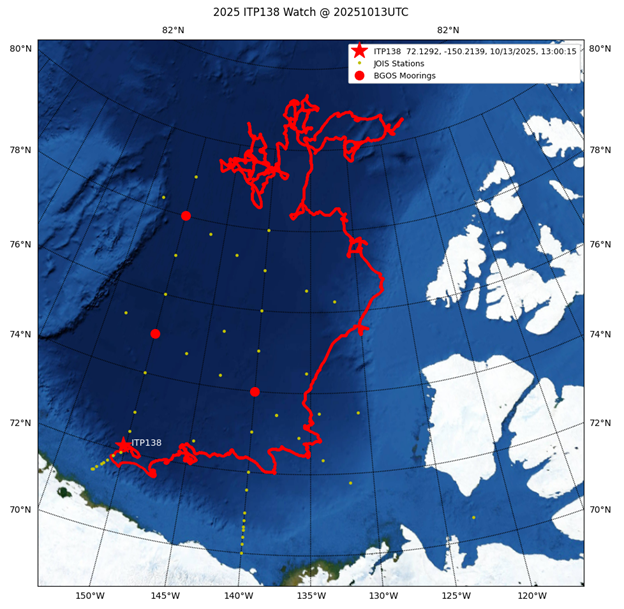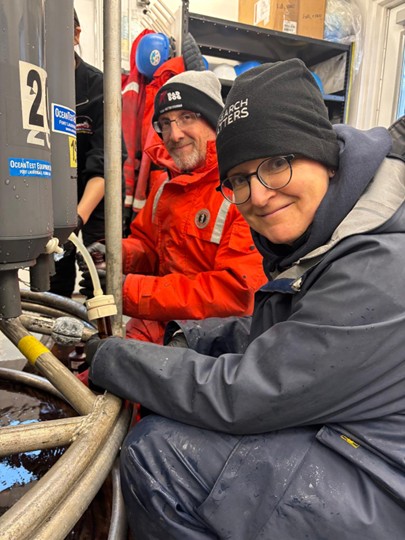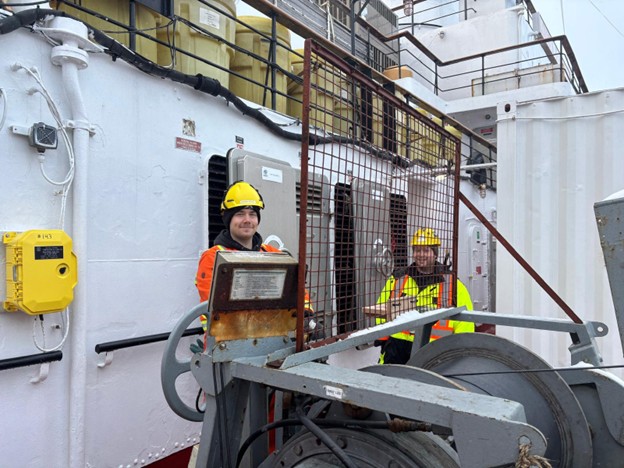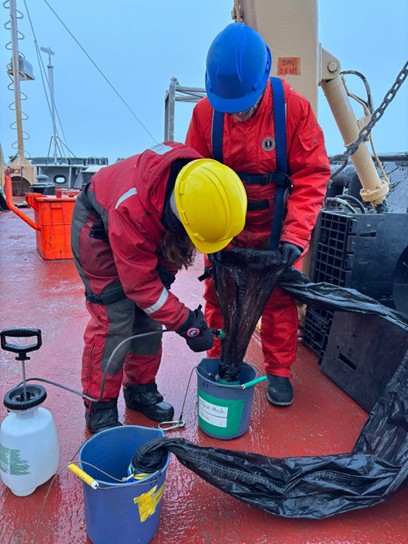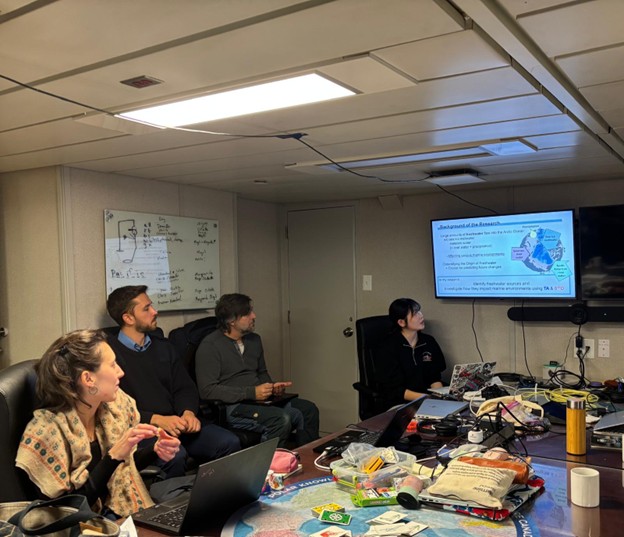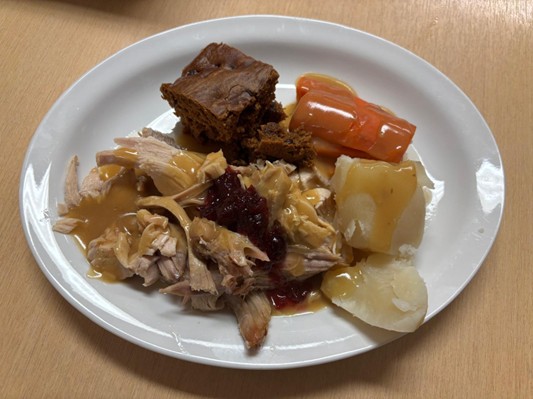Dispatch 25: The BL-Line
Jennifer Kosty (Yale University)
October 13, 2025
19:00 local, 71.53◦N, 150.33◦W
Conditions:
- Cloudy
- 0% sea ice cover
- -3◦C
- Sunrise: 13-Oct-2025 11:16
- Sunset: 13-Oct-2025 20:17
- Day length: 9 hours, 1 minute
Happy Canadian Thanksgiving! We are incredibly grateful to have spent 4 productive, science-filled weeks in the Arctic! We celebrated today with 3 festive meals prepared by our amazing cooks. Our breakfast featured a Thanksgiving casserole (in addition to the normal eggs, bacon, and hashbrowns). At lunch, we were treated to a massive feast of roasted turkey, gravy, boiled potatoes, veggie quiche, and raisin molasses pudding. Finally, our supper consisted of pulled pork/tofu sandwiches, poutine (a Canadian classic!), and mac and cheese.
In between these wonderful meals, we had another busy day of science! Around 11 am, we recovered an ice-tethered profiler (ITP138) that happened to be drifting near our planned route. ITP138 was deployed around 78◦N, 141◦W (on the same ice floe as TOP11 which we recovered yesterday) during the 2023 BGOS/JOIS expedition. After 2 months of collecting profile data, we believe ITP138 suffered from a rafting event which unfortunately severed its wire tether and prevented any future data collection. While the BGOS team was busy with the ITP recovery, Tsukushi Komura gave an excellent presentation on her research during the daily science meeting. Tsukushi is using total alkalinity and δ18O to identify sources of freshwater in the Canada Basin and understand how they impact marine environments.
Today also marked the beginning of the infamous BL-line. Named after the Alaskan city of Utqiagvik (formerly known as Barrow), the BL-line consists of 8 closely spaced science stations. These stations are located along the continental slope, where the ocean depth shoals from approximately 3000 m to 75 m. The day watch started the first 2950 m CTD rosette cast at 1 pm, and we anticipate wrapping up the BL-line tomorrow afternoon. The next 24 hours will be incredibly busy, as the watches complete back-to-back CTD rosette casts and the on-board analysts scramble to keep up with the ever-growing pile of samples!
